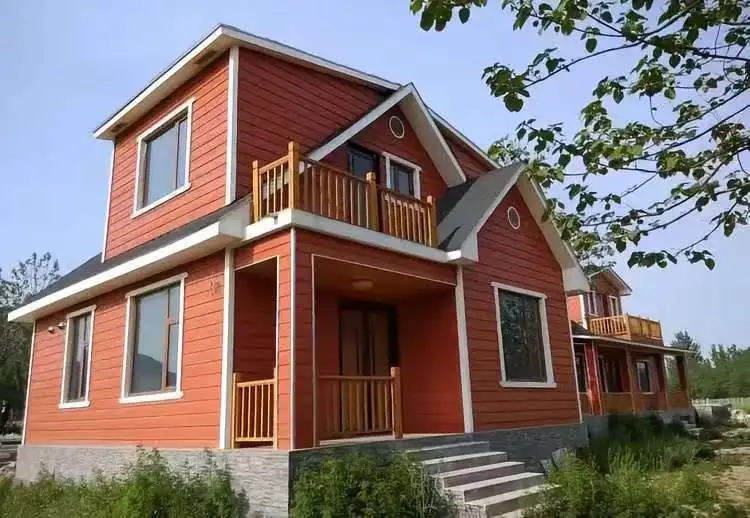The Benefits of Wood Grain Metal Siding for Your Home
Wood grain metal siding has gotten to be progressively well known among property holders and planners alike, advertising a idealize mix of aesthetics and usefulness. This innovative product mimics the natural beauty of wood while providing the superior durability and low maintenance of metal siding.
Aesthetic Appeal Meets Durability
One of the most striking highlights of wood grain metal siding is its capacity to duplicate the see of normal wood. Progressed fabricating strategies permit for the creation of practical wood grain designs and surfaces on metal surfaces. This means you can enjoy the warm, inviting appearance of wood without the associated maintenance headaches.
Accessible in a assortment of wood grain wraps up, from light oak to wealthy mahogany, this siding alternative permits mortgage holders to customize their home's outside to their correct inclinations. The color choices are tremendous, guaranteeing that you can discover the culminate shade to complement your home's building fashion and encompassing scene.
Superior Durability and Weather Resistance
Not at all like conventional wood siding, wood grain metal siding offers uncommon solidness and resistance to the components. Made from materials such as aluminum, steel, or stainless steel, these boards are planned to withstand cruel climate conditions, counting overwhelming rain, solid winds, and extraordinary temperatures.
The corrosion-resistant properties of metal siding guarantee long-lasting security from weathering, anticipating issues like decay, twisting, and creepy crawly invasions that regularly torment wood siding. This toughness deciphers to a longer life expectancy for your home's outside, possibly sparing you cash on repairs and substitutions in the long run.
Energy Efficiency and Insulation
Wood grain metal siding isn't just about looks and durability; it also contributes to your home's energy efficiency. Many metal siding options come with built-in insulation layers, typically made of polyurethane or polystyrene. This extra separator makes a difference control your home's temperature, keeping it cooler in summer and hotter in winter.
The warm cover properties of wood grain metal siding can lead to noteworthy vitality reserve funds, lessening your warming and cooling costs all through the year. This energy-efficient highlight not as it were benefits your wallet but too contributes to a more feasible and eco-friendly domestic.
Installation Process and Considerations
Installing wood grain metal siding over existing wood requires careful planning and execution. Whereas it's conceivable to do this as a DIY venture, numerous mortgage holders select to work with proficient installers to guarantee the best comes about.
Preparing the Existing Wood Surface
Before introducing metal siding, it's vital to review and get ready the existing wood surface. Any zones of decay or harm ought to be repaired or supplanted to give a strong establishment. The surface ought to be cleaned completely and permitted to dry totally.
A moisture barrier is typically installed over the wood to prevent any potential moisture issues. This step is vital in protecting both the new metal siding and the underlying wood structure from water damage.
Installation Techniques
The installation of wood grain metal siding usually involves the use of furring strips. These strips create a small air gap between the old wood siding and the new metal panels, allowing for proper ventilation and preventing moisture buildup.
Metal siding boards are accessible in different thicknesses, regularly extending from 1.0 mm to 2.0 mm. The choice of thickness can affect both the durability and the cost of the project. Custom sizes are often available, allowing for a perfect fit on any home.
Surface Treatment and Finishing
The surface treatment of wood grain metal siding plays a significant role in its appearance and longevity. Options include coated, painted, or anodized finishes. These treatments not only enhance the wood-like appearance but also provide additional protection against the elements. Proper installation and finishing ensure that your wood grain metal siding will maintain its beautiful appearance for years to come, with minimal maintenance required.
Safety and Environmental Considerations
When selecting siding for your home, it’s important to prioritize both safety and environmental impact. Wood grain metal siding excels in both these areas, offering peace of mind along with its aesthetic and functional benefits.
Fire Safety
One major benefit of metal siding compared to wood is its superior fire resistance.Wood grain metal siding typically meets ASTM E84 standards for fire safety, providing enhanced protection for both residential and commercial spaces. This non-flammable characteristic can be a crucial factor in areas prone to wildfires or for buildings that require additional fire safety measures.
Eco-Friendly Choice
Wood grain metal siding represents a sustainable alternative to traditional wood siding. By choosing metal siding, you're reducing the demand for timber and helping to preserve forests. Moreover, metal siding is regularly made from reused materials and is itself recyclable at the conclusion of its life cycle, contributing to a more circular economy.
Low Maintenance and Longevity
The durability and low maintenance requirements of wood grain metal siding contribute to its environmental friendliness. Unlike wood siding that may require frequent painting, staining, or replacement, metal siding maintains its appearance and functionality with minimal upkeep. This reduces the need for paint, stains, and other maintenance products that can have environmental impacts.
Conclusion
Wood grain metal sidingoffers an innovative solution for homeowners looking to enhance their home's exterior. It combines the timeless appeal of wood with the durability, energy efficiency, and low maintenance of metal siding. Whether you're renovating an older home or building a new one, this versatile product provides an excellent balance of aesthetics and functionality.
As you consider your siding options, remember that proper installation is key to maximizing the benefits of wood grain metal siding. For more information on exterior cladding and facade solutions, including wood grain metal siding options, don't hesitate to reach out to experts in the field. Contact us at info@sdqsc.com to explore how wood grain metal siding can transform your home while providing lasting protection and beauty.